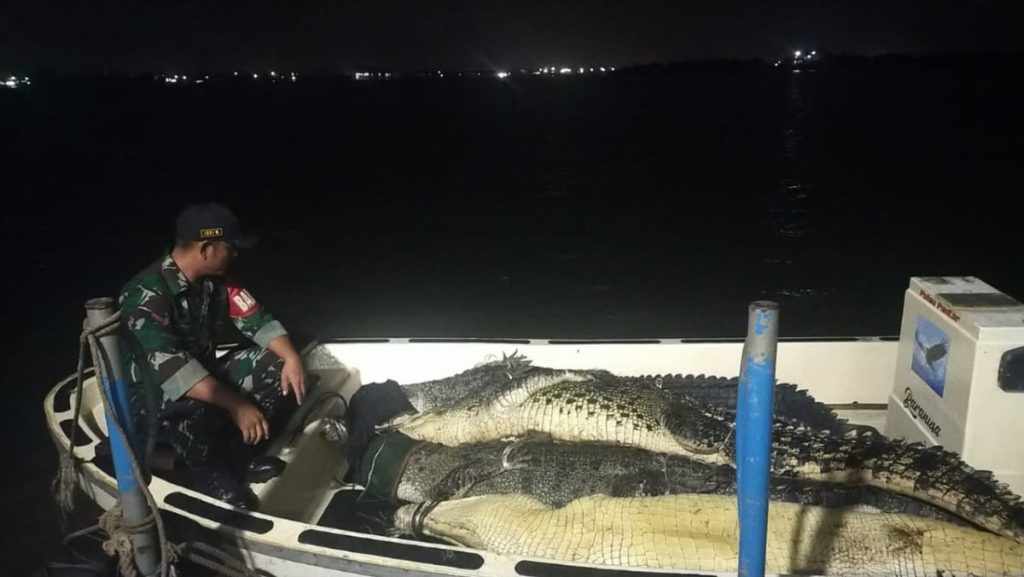The tranquil waters surrounding the Indonesian islands near Singapore were recently disturbed by an unexpected influx of reptilian residents. Thirty-four crocodiles, escapees from a breeding farm on Bulan Island, were apprehended by Indonesian authorities as of January 22nd. These captures, spanning various locations including Mangkada and Seraya islands, Sepaku Bay, Lokan River, and Batu Legong in Batam, marked a significant step in containing the potential threat posed by these large reptiles. Among the captured was a behemoth weighing over 1,000kg, highlighting the considerable size and potential danger of these animals. The Indonesian Navy’s Main Naval Base (Lantamal) IV, spearheaded the capture efforts through an Integrated Taskforce for Disaster Management and Crocodile Evacuation. The taskforce successfully retrieved the crocodiles, subsequently transferring them back to captivity on Bulan Island.
The crocodile exodus began on January 13th, triggered by torrential rains that breached the perimeter fence of their enclosure on the breeding farm. Bulan Island, situated approximately 30 kilometers from Singapore’s Sentosa Island, raised concerns about the possibility of the escaped crocodiles reaching Singaporean shores. However, Lieutenant Colonel Mar Bambang Irianto, head of Maritime Potential Threat of Lantamal IV, downplayed the risk, stating that the likelihood of these reptiles successfully navigating the open waters to Singapore was “very low.” This assessment likely factored in the distance, ocean currents, and the crocodiles’ natural behavior.
While the recapture of 34 crocodiles represents a substantial achievement, the exact number that initially escaped remains unknown, adding a layer of uncertainty to the situation. This lack of precise information makes it challenging to definitively declare the incident fully resolved. The continued efforts of Indonesian authorities will focus on locating and retrieving any remaining escapees to ensure the safety of residents in the surrounding areas and eliminate any potential ecological disruption caused by these non-native predators.
The incident underscores the inherent risks associated with containing large and potentially dangerous animals in close proximity to human populations. The structural failure of the enclosure due to heavy rainfall highlights the vulnerability of such facilities to environmental factors. This event necessitates a thorough review of safety protocols and infrastructure at crocodile farms, particularly those situated in regions prone to extreme weather events. Strengthening enclosures and implementing robust contingency plans for escapes are crucial to prevent similar incidents in the future.
The successful recapture operation serves as a testament to the effective coordination and rapid response of the Indonesian authorities. The collaborative efforts of the various agencies involved demonstrated their commitment to containing the situation and protecting the public. The experience gained from this incident can inform future strategies for managing similar events, enhancing preparedness and response capabilities in the region. Ongoing monitoring of the waters around Bulan Island will be essential to ensure that any remaining crocodiles are swiftly identified and retrieved.
This incident also serves as a reminder of the delicate balance between human activities and the natural world. The establishment of crocodile farms, while potentially contributing to economic development, must be undertaken with careful consideration of the potential risks and environmental impacts. Implementing stringent regulations and oversight is essential to ensure the responsible management of these farms and minimize the likelihood of escapes that could endanger both human populations and the ecological integrity of the surrounding areas. This event underscores the need for continuous vigilance and proactive measures to prevent future incidents and maintain the harmony between human and animal populations.

